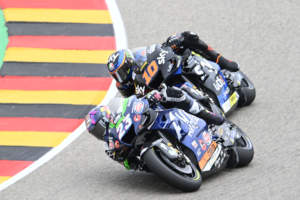until Abu Dhabi Autonomous Racing League

Excellent. Good. Poor. Good. Excellent.
That might read like a school report card, but it’s actually this writer’s assessment of Johann Zarco’s five seasons in MotoGP so far, indicating something of a (purely coincidental) recursive pattern.
Zarco starred on Tech3’s Yamaha, flopped at KTM, was reborn with the small Avintia team and has now broken out again after a Ducati promotion to Pramac. That second ‘excellent’ is of course provisional, as there’s more than half the season to go, but Zarco has been one of the undeniable stars of the first stretch.
“About Zarco, what to say – four podiums in eight races, always on the leading group, fighting for the podium,” Pramac boss Francesco Guidotti raves to MotoGP.com. “Nothing [bad] to say.
“I think in this moment we can be only happy.”
Zarco’s Pramac alliance has ticked all kinds of boxes so far, but one major one remains – the first win, for team and rider.
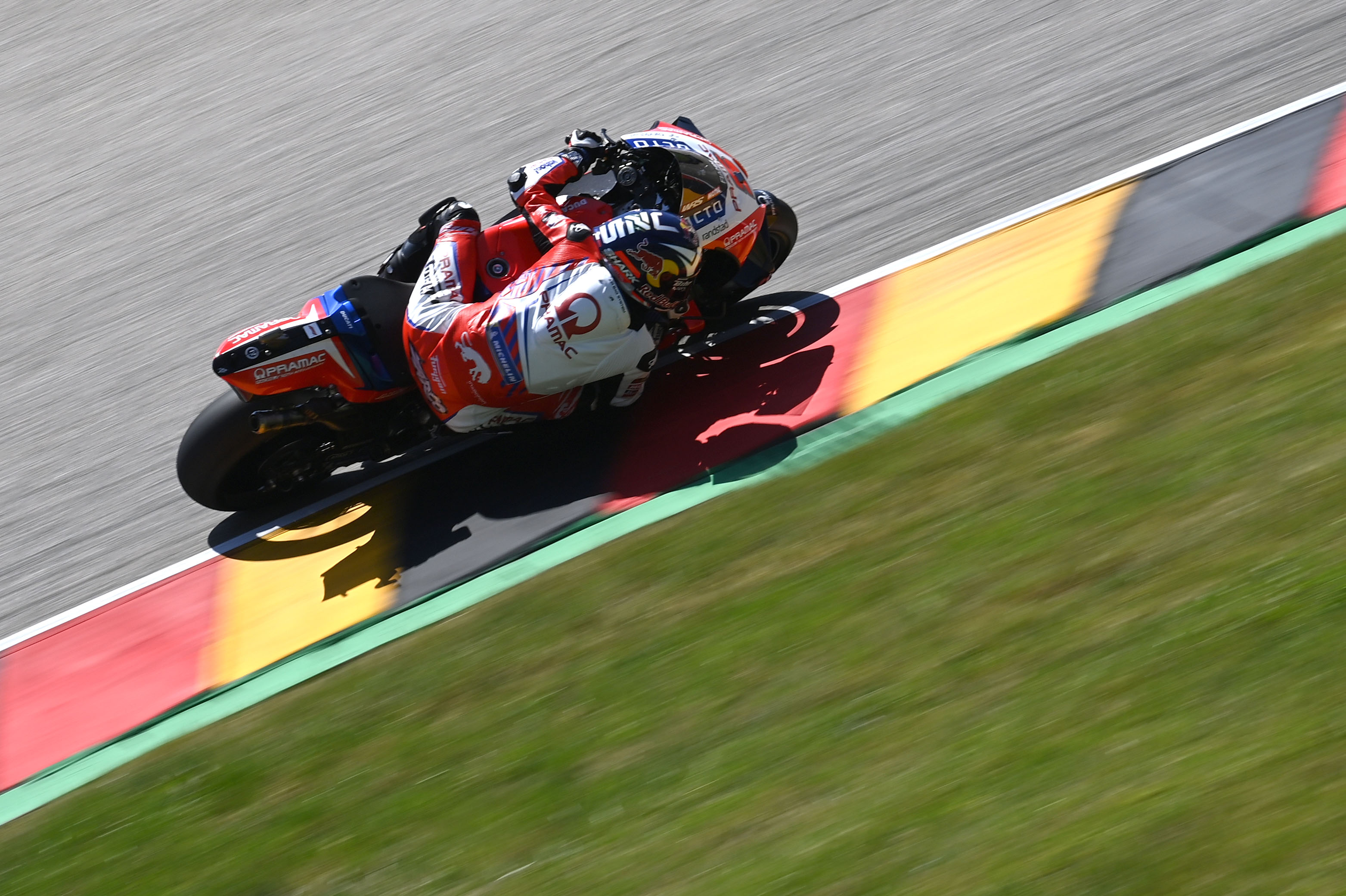
“Winning a race is always welcome,” Guidotti says, but he goes on to make it clear, repeatedly, that Pramac’s lack of a win is not something that keeps him awake at night, despite how remarkably close the Italian team has come on so many occasions.
But if Pramac’s lack of a win is something of a statistical oddity, so too is Zarco’s. For someone who established himself as a MotoGP frontrunner from his very first race, though he’s certainly had his ups and downs, Zarco’s already pretty close to being the most successful and high-performing winless rider in the MotoGP era.
Once the summer break concludes, he will be presented with a good opportunity to shed that status – with two races at the Red Bull Ring, a particularly Ducati-friendly track. If it doesn’t come there, there are bound to be more opportunities this season.
But guarantees are few and far between in MotoGP, and premier-class grand prix racing’s history is littered with good riders who never got to stand on the top step.
Zarco, though, is a very particular case. Since his 2017 debut, in which he led the way under the lights in Qatar before hitting the deck, Zarco has accrued 11 podiums with two separate marques.
The Tech3-run older-spec Yamaha Zarco was provided with gave him a number of opportunities to get his – and the French team’s – first win, especially as for several weekends during that two-year stretch his good showings coincided with off days for the factory-spec Yamahas.
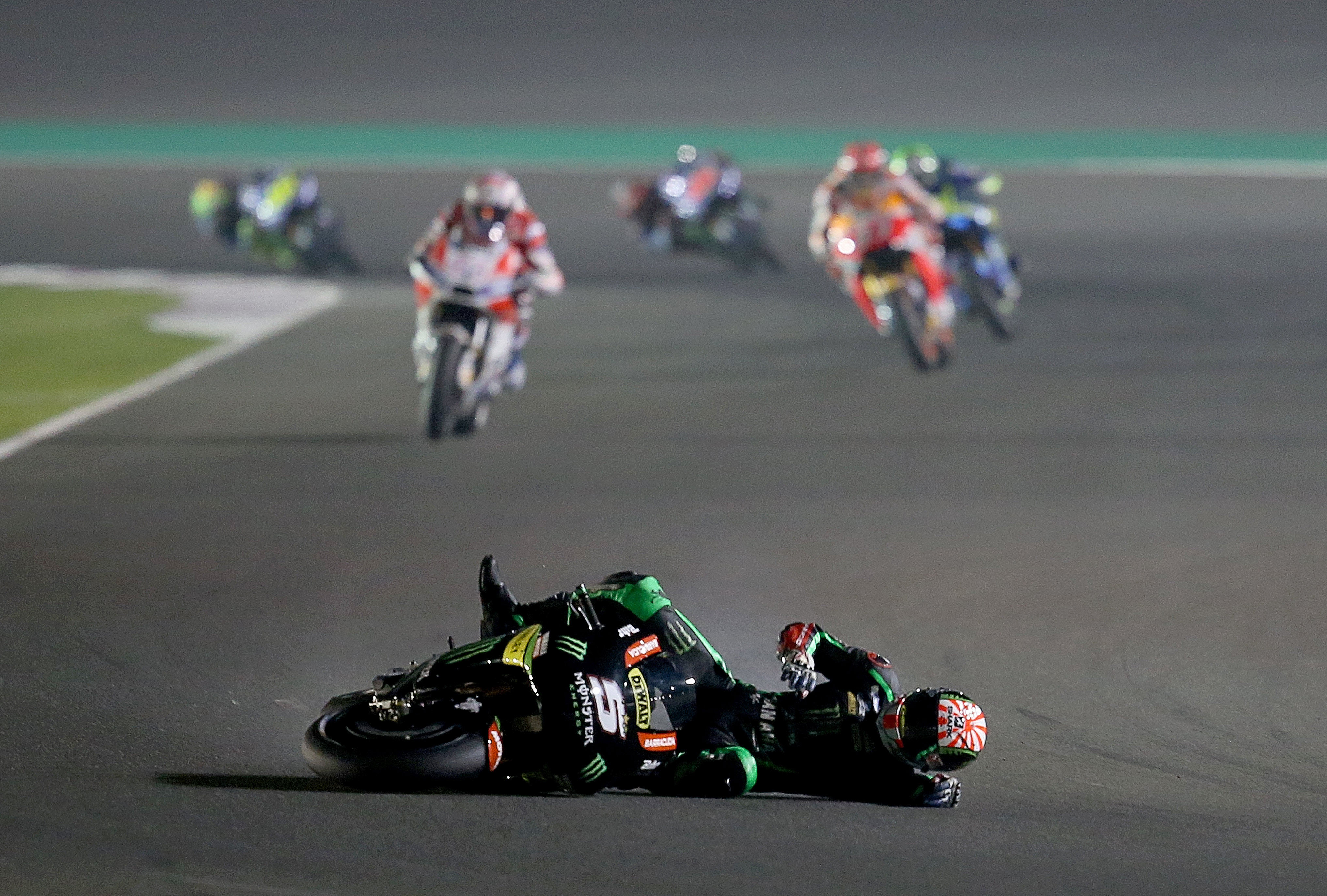
But the big chance in 2017, bigger even than in the opener and the Assen race in which he started from pole but was thwarted by rain (and a needless bike swap), came in the Valencia finale as he was defeated by Dani Pedrosa only on the final lap.
And while 2018 was a slightly worse season, there was the chaotic Argentina race in which he came up just short of defeating Cal Crutchlow, the pair aided by obvious pacesetter Marc Marquez having something of an all-time shocker.
While both Zarco and Tech3 went on to join the KTM camp, their paths diverged soon after. Zarco floundered in the factory colours and basically lost a year of his MotoGP career, and by the time Tech3 had chalked up its first-ever win, with a KTM, Zarco was already at the start of his Ducati journey.
With the factory-spec Desmosedici this year, he’s taken his MotoGP podium count to 11 (which potentially should be 12, depending on how you view the application of post-race penalties at Mugello) and was just a couple of tenths off snatching a win at Barcelona.
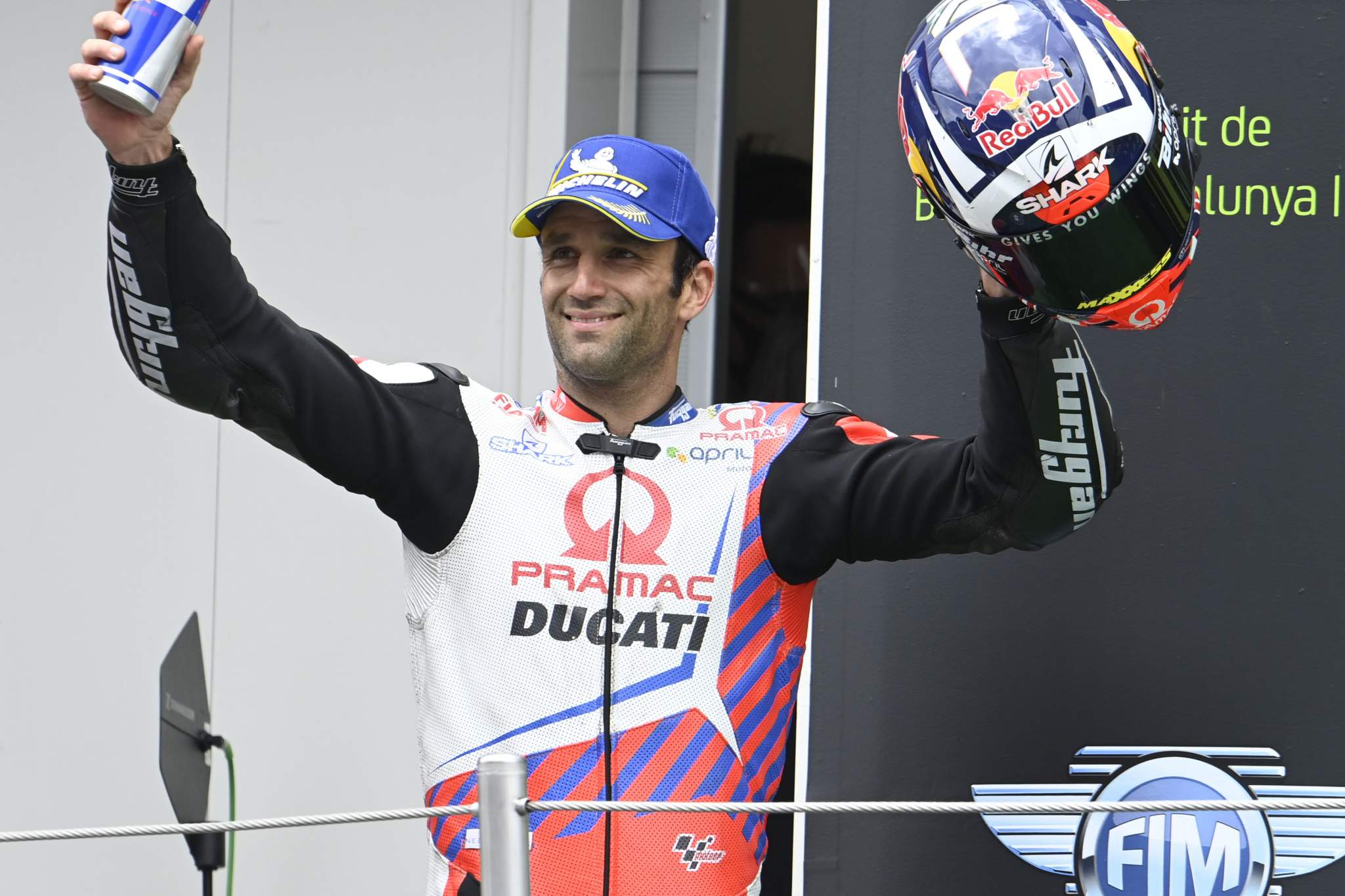
All of that creates a picture of a rider who is way too good to stay winless for much longer. And Zarco is at least partly an outlier.
No, he doesn’t have the most points of a winless premier-class rider ever, or even the most points-per-race, thanks to his poor KTM stint. But when it comes to two metrics that are arguably better at determining frontrunner status, he really shines.
Zarco’s six poles are not only the most for a premier-class rider without a win, but almost unprecedented since poles started to be counted. The only one rider to have accrued six poles before a first win is fellow French phenom Fabio Quartararo, and he’s since put that right by winning several races.
Most laps led by a winless premier-class rider since 1991
Johann Zarco (MotoGP career: 2017 – ongoing), 87 laps
Colin Edwards (MotoGP career: 2003 – 2014), 65 laps
Stefan Bradl (MotoGP career: 2013 – ongoing), 36 laps
Doug Chandler (500cc career: 1991 – 1994), 30 laps
The poles and led laps potentially convey a rider who is quick out of the blocks but fades over a race distance, like an early Ducati-spec Jorge Lorenzo. Zarco’s Ducati adaptation has lent itself to a lot of parallels with Lorenzo’s, given they’re both ex-Yamaha studs – but like with Lorenzo, Zarco’s race pace on the Ducati is looking increasingly more sustainable with time.
“As long as I push in this way, the victory will come,” Zarco says. And, look, someone who’s bagged 11 podiums has to get it done sooner rather than later, right?
A fairly recent example says otherwise. Colin Edwards, who arrived to MotoGP as a two-time World Superbike champion, visited the podium 12 times over a 12-season premier-class career but never stood on the top spot.
He parlayed a solid season on a Gresini Honda into a factory Yamaha team but went winless in three seasons as Valentino Rossi’s team-mate before being moved aside to make room for Lorenzo.
Zarco has never had top factory machinery for that long a stretch, and there’s probably little chance that he would’ve been winless still if he got that opportunity. But Edwards did have to go up against a prime Rossi and a prime Casey Stoner, both of whom took away wins that easily could’ve gone to the American.
His biggest near-miss, however, wasn’t against either but against Nicky Hayden. On an Assen 2006 weekend where Rossi had got injured in practice and was a non-factor for victory, Edwards flew Yamaha’s banner out front and led the vast majority of the race.
Even when he suddenly came under heavy pressure from Hayden and went straight on at Ruskenhoek on the penultimate lap, he caught his compatriot back up over the remaining lap and got through at the fast Hoge Heide right-hander.
Having virtually called the race for Hayden a few corners earlier, the commentators were now convinced Edwards had it in the bag, but he took an ultra-defensive line through the final chicane to make sure.
Hayden, trying to go around the outside, sat up and ran through the gravel, but Edwards himself couldn’t make it through the corner either, catching the grass on the inside of the second part of the chicane and getting chucked off his bike with mere metres to go.
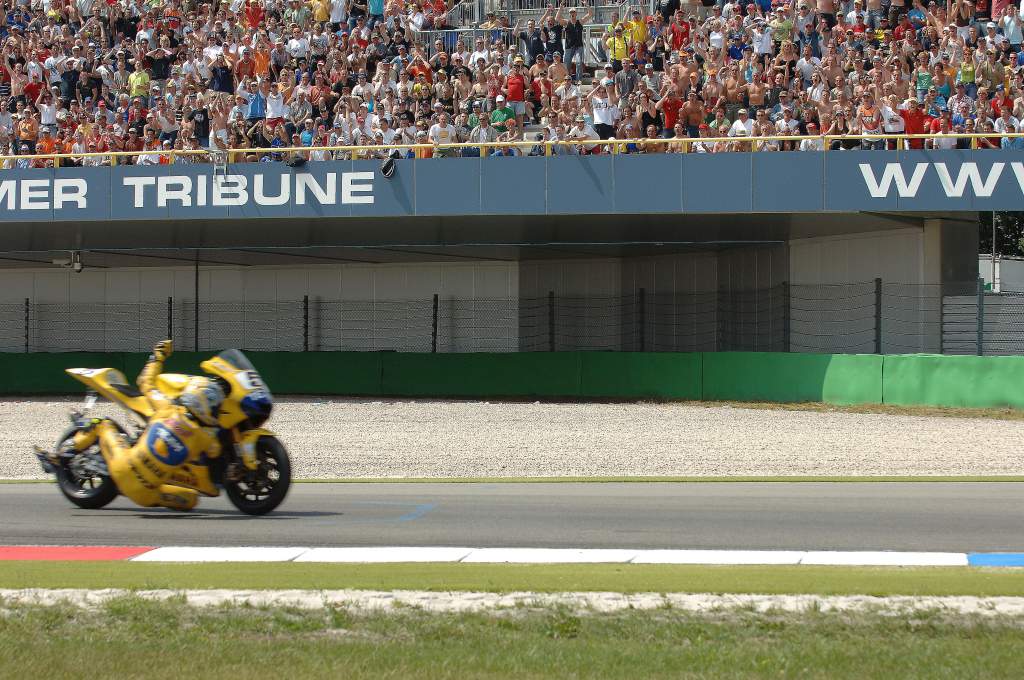
It was a genuinely preposterous way to lose a MotoGP win, made even more so by the fact the five points Edwards’ crash gave Hayden were absolutely pivotal in securing him the 2006 title.
And Edwards would never get that close to a MotoGP victory again, even though he still visited the podium a few times once moved to the Tech3 Yamaha squad.
Edwards’ run of podiums without a win – which would be matched with one more by Zarco – is somehow not a premier-class record.
In the late 1960s and early 1970s, 500cc privateer Jack Findlay picked up as many as 15 podium finishes without winning, something easily explainable by the factory-backed dominance of that era’s benchmark rider Giacomo Agostini.
But once Agostini elected to skip the Ulster Grand Prix in 1971, Findlay was there to pick up the pieces, recording his first grand prix win in what was the event’s final year on the championship calendar.
Findlay’s example is probably not very instructive. But for a modern-era analogy, there’s Cal Crutchlow.
Crutchlow, who will return to racing in MotoGP after the summer break as a stand-in for the injured Franco Morbidelli, imitated fellow WSBK graduate Edwards’ career pattern – albeit in a slightly different order. A satellite Yamaha ride turned into a shortlived factory tenure with Ducati, before a long stint at Honda’s premier satellite team – now LCR rather than Gresini.
Podiums followed at each of those stops, even at Ducati. But there was no Edwards-like Assen moment of nearly snatching a win – the closest was probably Sachsenring in 2013, where he kept Marquez under pressure but ultimately couldn’t prevent him kicking off his absurd ongoing German GP streak.
All in all, Crutchlow didn’t lead a lap until Brno 2016. But once he did take the lead there, he stormed away to a comfortable victory in the wet, his maiden win corresponding with his 10th MotoGP podiums.
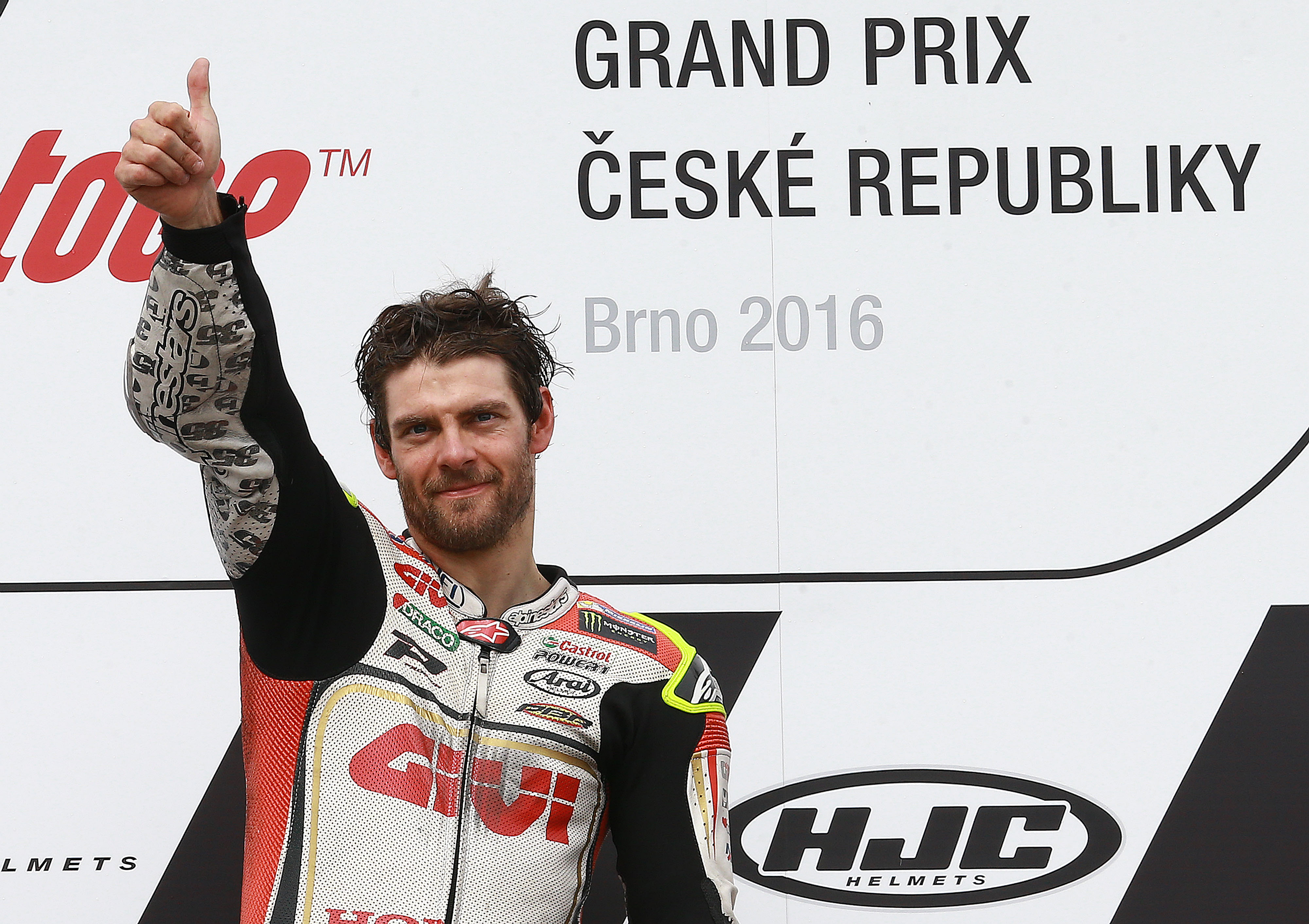
It’ll be one or the other for Zarco. Either he will go down in MotoGP history as a rider who, like Edwards, had MotoGP victory in his palm but couldn’t quite clench the fist – or, like Crutchlow, he will come through and deliver a long-anticipated triumph.
Both scenarios are plausible. But one feels significantly more plausible than the other, especially because Zarco’s podiums have been something of a different level.
Edwards and pre-win Crutchlow never finished within a second of the winner, while Zarco has done it three times. Edwards and pre-win Crutchlow had more third places than second places, but the opposite is true for Zarco.
The average gap to the winner in Edwards’ podium finishes was 7.952s. For pre-Brno Crutchlow’s nine podiums, it was 8.032s. For Zarco it is 3.122s.
And you may rightly point out there that he’s spent his whole career racing in a much closer MotoGP than Edwards or early-career Crutchlow, which does seem to ring true – and yet the gap to fourth place in the three riders’ podium finishes is broadly similar. It’s 5.814s for Edwards, 5.878s for Crutchlow and 5.209s for Zarco.
Even if Zarco never scores a win, he will retire having been a genuine MotoGP frontrunner. But there’s little reason to bet on it. In fact, he seems to be setting his sights higher than just being a race winner – and, though he’s already 31, on current form even a championship future is not out of the question.




